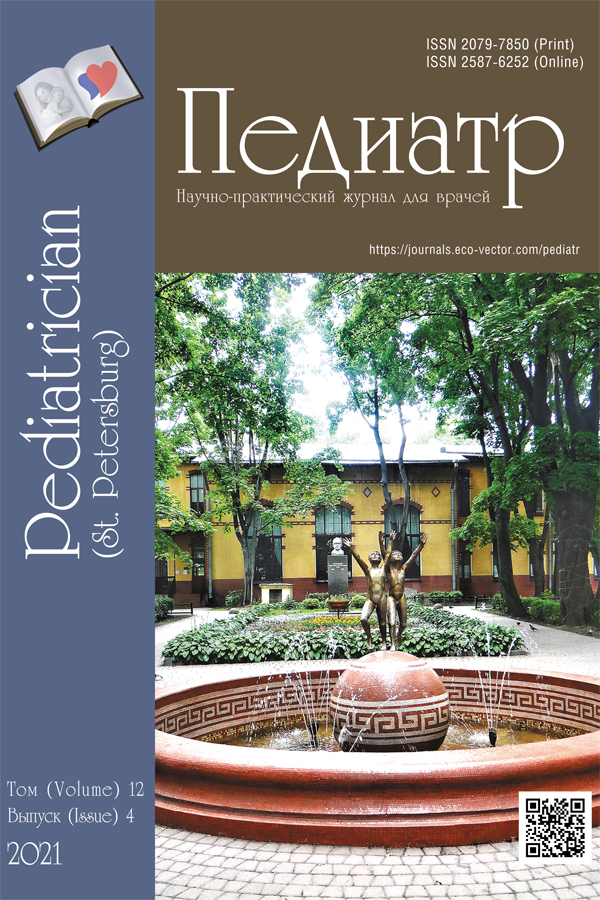Роль лекций в современном образовательном пространстве
- Авторы: Андреева С.А.1, Карелина Н.Р.1, Ким Т.И.1, Артюх Л.Ю.1, Оппедизано М.Л.1
-
Учреждения:
- Санкт-Петербургский государственный педиатрический медицинский университет
- Выпуск: Том 12, № 4 (2021)
- Страницы: 103-112
- Раздел: Медицинское образование
- URL: https://journals.eco-vector.com/pediatr/article/view/90077
- DOI: https://doi.org/10.17816/PED124103-112
- ID: 90077
Цитировать
Аннотация
В статье изложены личные взгляды авторов на роль, место и формы лекционного преподавания морфологических дисциплин в высших медицинских учебных заведениях. Исторический анализ показывает, что лекция традиционно служила ведущей формой обучения в университетах. В то же время повышение требований к качеству и эффективности современного учебного процесса, интенсивное внедрение компьютерных технологий в образование и медицину ставят вопрос о предпочтительных способах проведения этого вида аудиторных занятий. Вместе с тем сложная эпидемиологическая обстановка, которая наблюдается в наши дни во всем мире, внесла свои коррективы в эту дискуссию. В статье приведен сравнительный обзор различных форм изложения лекционного материала (очное чтение лекций, онлайн-лекция в синхронном и асинхронном вариантах), подробно изложены преимущества и недостатки каждой из них. Оценивая положительные и отрицательные стороны дистанционного чтения лекций, можно сказать, что этот формат не является совершенным для обучения в медицинском университете. Еще в большей степени он не подходит для чтения лекций по анатомии человека, так как при этом страдает их демонстративность. «Лекция — парад кафедры», — отмечал академик АМН СССР В.Н. Шевкуненко. Именно она может и должна дать студенту творческий заряд, путеводную нить в переработке мощного потока информации, отобрать наиболее полезное и необходимое, способствовать развитию профессиональной компетентности, помочь обрести жизненные ориентиры и ценности, а также смысл будущей профессии. Все это возможно в полной мере осуществить только при «живом» общении в лекционной аудитории, в чем и заключается секрет долголетия лекции.
Ключевые слова
Полный текст
Об авторах
С. А. Андреева
Санкт-Петербургский государственный педиатрический медицинский университет
Автор, ответственный за переписку.
Email: andreyevas@live.ru
канд. мед. наук, доцент кафедры анатомии человека
Россия, Санкт-ПетербургН. Р. Карелина
Санкт-Петербургский государственный педиатрический медицинский университет
Email: karelina_nr@mail.ru
д-р мед. наук, профессор, заведующая кафедрой анатомии человека
Россия, Санкт-ПетербургТ. И. Ким
Санкт-Петербургский государственный педиатрический медицинский университет
Email: info@eco-vector.com
cтарший преподаватель кафедры анатомии человека
Россия, Санкт-ПетербургЛ. Ю. Артюх
Санкт-Петербургский государственный педиатрический медицинский университет
Email: l-artyukh@mail.ru
ассистент кафедры анатомии человека
Россия, Санкт-ПетербургМ. Л. Оппедизано
Санкт-Петербургский государственный педиатрический медицинский университет
Email: kafedraanatomii2019@gmail.com
лаборант кафедры анатомии человека
Россия, Санкт-ПетербургСписок литературы
- Васильев В.С. Роль и место лекции в учебном процессе в высшей медицинской школе в современных условиях. Личный взгляд на проблему // Журнал Гродненского государственного медицинского университета. 2009. T. 26, № 2. C. 224–226.
- Гончаров Н.И. Зримые фрагменты истории анатомии. Москва: Издатель, 2005.
- Жданов Д.А. К прогнозу развития главных направлений морфологии на ближайшие 10–15 лет // Архив анатомии, гистологии и эмбриологии. 1971. Т. LX, № 5. С. 5–13.
- Зайцев В.С. Вузовская лекция: учебно-методическое пособие. Челябинск: Библиотека А. Миллера, 2018. 43 c.
- Иванов Д.О., Алекандрович Ю.С., Орел В.И., и др. Пандемия коронавирусной инфекции: вызов высшему медицинскому образованию и реагирование // Педиатр. 2020. Т. 11, № 3. С. 5–12. doi: 10.17816/PED1135-12
- Иванова П., Пашко А., Смирнова О. Значение учения В.Н. Шевкуненко на примерах анатомических препаратов музея кафедры оперативной хирургии // Forcipe. 2018. Т. 1, № 1. С. 13–24.
- Ле Гофф Ж. Цивилизация средневекового Запада. М.: Прогресс, 1992. 376 c.
- Лесгафт П.Ф. Избранные педагогические сочинения. М.: Педагогика, 1988. 398 c.
- Лурия Р.П. Коммуникативная деятельность: структурные компоненты, виды, уровни и формы // NovaUm.Ru. 2018. № 11. C. 248–250.
- Михалкина М.В., Михалкин К.П. Памяти одной из первых преподавательниц кафедры анатомии человека Санкт-Петербургского государственного педиатрического медицинского университета Зинаиды Александровны Ромодановской // Forcipe. 2020. Т. 3, № 1. С. 4–7.
- Орел В.И., Гостимский А.В., Лисовский О.В., и др. Контроль практических навыков выпускников ФГБОУ ВО «Санкт-Петербургский государственный педиатрический медицинский университет» в рамках аккредитации // Медицина и организация здравоохранения. 2017. Т. 2, № 4. С. 10–18.
- Осьмина К.С. Внедрение онлайн-лекции в традиционное образование // Мир науки, культуры, образования. 2019. № 4(77). C. 177–179.
- Пирогов Н.И. Избранные педагогические сочинения. М.: Издательство Академии Педагогических Наук РСФСР, 1952.
- Роботова А.В. Университетская лекция: прошлое, настоящее, будущее // Высшее образование в России. 2011. № 4. C. 127–133.
- Сперанский В.С., Гончаров Н.И. Очерки истории анатомии: научное издание. Волгоград: Издатель, 2012. 216 с.
- Чебышев Н., Каган В.Е. Основа развития современной высшей школы // Высшее образование в России. 1998. Т. 2. С. 17–22.
- Шестопалов Е.B., Суворова Е.B. Преимущества и недостатки дистанционного обучения // Современные проблемы науки и образования. 2020. № 6. C. 1–9. doi: 10.17513/spno.30349
- Afek A., Friedman T., Kugel C., et al. Dr. Tulp’s Anatomy Lesson by Rembrandt: the third day hypothesis // Isr Med Assoc J. 2009. Vol. 11, No. 7. P. 389–392.
- Cregan K. Early Modern Anatomy and the Queen’s Body Natural: The Sovereign Subject // Body Soc. 2007. Vol. 13, No. 2. P. 47–66. doi: 10.1177/1357034x07077775
- Elhadi A.M., Kalb S., Perez-Orribo L., et al. The journey of discovering skull base anatomy in ancient Egypt and the special influence of Alexandria // Neurosurg Focus. 2012. Vol. 33, No. 2. P. E2. doi: 10.3171/2012.6.FOCUS12128
- Ghosh SK. The evolution of epistemological methodologies in anatomy: From antiquity to modern times // Anat Rec (Hoboken). 2021. doi: 10.1002/ar.24781
- Hendriks I.F., Zhuravlev D.A., Bovill J.G., et al. Nikolay Ivanovich Pirogov (1810–1881): Anatomical research to develop surgery // Clin Anat. 2020. Vol. 33, No. 5. P. 714–730. doi: 10.1002/ca.23493
- Ludmerer K.M. Learning to Heal: The Development of American Medical Education. Baltimore: Johns Hopkins University Press, 1985. 359 p.
- Ludmerer K.M. Learning To Heal: American Medical Education in the Mid-Nineteenth Century. NY: Basic Books Inc., 1985. 368 p.
Дополнительные файлы























